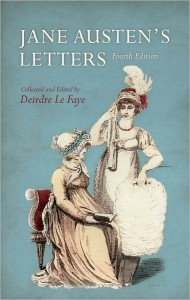Don’t we all eventually end up in an English country house? Today, I’m continuing the tour of my library with a look at some of the books I use when I’m writing about a country house – or just looking for a little escapist eye candy. These books all touch on the physical layout, structure and design of the house. What goes on in and around the house is a topic for another day.
Let’s start with an overview. Adrian Tinnswood’s Country Houses from the Air is just what it says. Not relegated to a single era, this book still gives an excellent picture of the English country house within its environs. Aerial photography and early architectural plans and prospects combine to provide a look at the origins and current state of the houses under discussion. The text provides some solid historical background and picks out notable features of the houses.
While we’re airborne, let’s take a look at Gervase Jackson-Stops’s The English Country House in Perspective. I love this book It takes 12 country houses, provides a brief history and description, includes architectural layout of each house, some drawings or photos of the exterior and then – the payoff in this book, in my opinion – a cutaway view of the house showing the location and layout of various rooms in three-dimensional detail. It makes it so much easier to move characters around the interior of one of these houses and to imagine the interactions taking place inside.
Before we go inside, however, let’s look at the exterior of the buildings. In The Pattern of English Building, Alec Clifton-Taylor has written a detailed treatise on the construction materials used in various parts of England. He links the geology of the country to the building in its various locations. There is little in the book on the use of materials in the interior, but we can find that information elsewhere. This book identifies the stone and other materials available in each area and includes a geological map showing the type of rock prevalent in each area. This illustrates why it makes sense to have most of Bath built of that glorious Oolitic limestone that captures the afternoon light so beautifully, but also discusses how Bath stone was also among the first quarried stone to be shipped to other parts of the country. This is a detailed and well-documented book with lots of photographs that are unfortunately in black and white in my paperback edition.
I have several books on country house interiors, but for this post have picked the sumptuously illustrated The Regency Country House From the Archives of Country Life by John Martin Robinson. This is the best kind of coffee table book, full of photographs of interiors and categorized into “The Palaces, The Nobelman’s House, and The Gentleman’s House.” It includes photos of interiors, from grand stairways to tucked-away drawing room alcoves. The furnishings in these photographs are not all of our period, but the book is worth looking at for a sense of the rooms.
There are a lot of books on the interior design of the period. One of the most exhaustive is Regency Design 1790-1840 by John Morley. This book covers gardens. buildings, interior decoration, and furniture and weighs a ton. It discusses the impetus behind changing fashion and contains period illustrations of each of the various elements on which it focuses.
If you want something a little more focused, you might like Design & The Decorative Arts Georgian Britain 1714-1837 by Michael Snodin and John Styles. Although this is book surveys a longer period, it includes many illustrations of fashion leaders, decorative arts. and fashionable living.
I find picking up any one of these books inspiring and invigorating. There’s no telling where your next idea is going to come from. And if inspiration is not quick in coming, these books are good places to spend a few secluded hours just enjoying the atmosphere.


















